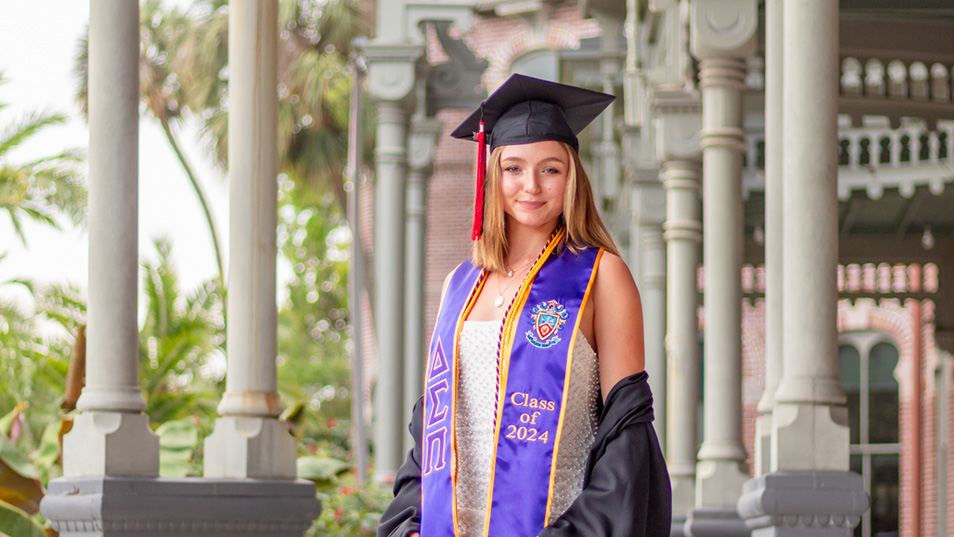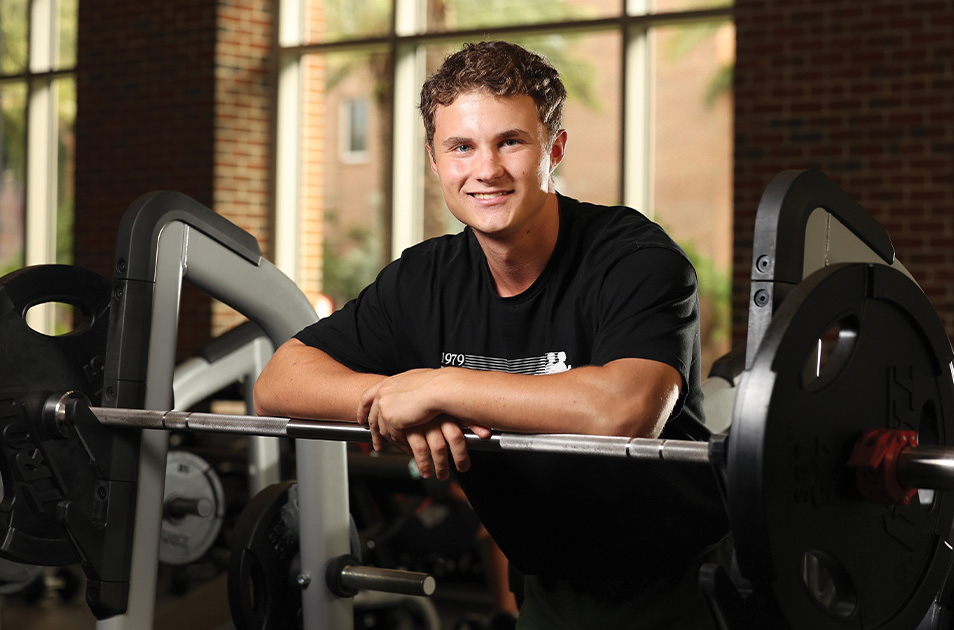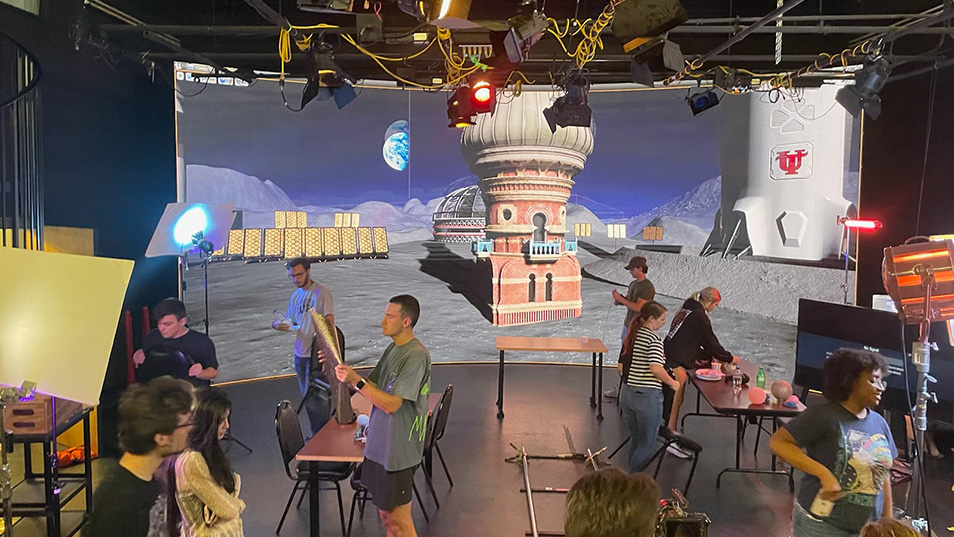Published: November 17, 2021
UT Film Students Work With Innovative LED Volume
Picture Disney’s Mandalorian walking through the dunes of a desert landscape with the sun beating down, and The Child floating alongside. You almost feel bad for the actor who must be sweating inside that costume. Now picture the same scene, but this time the blazing sun is actually just a light fixture, the actors are in air conditioning and the desert mountains are illusions created on a gigantic screen in a production studio.
The beautiful environmental landscapes in The Mandalorian are made on something called an LED volume, which is a curved, 20-foot-tall and 75-foot-wide screen that’s made up of panels. A growing number of television series and films use LED volumes of various sizes to perfect their graphic landscapes.

A growing number of television series and films use LED volumes of various sizes to perfect their graphic landscapes.
This year, UT film and media arts students had the opportunity to work with this innovative technology by filming and producing a short film with Diamond View Studios. Diamond View and its sister company, Vū Technologies, have a virtual production studio in Tampa and are now one of the largest providers of LED volumes for virtual production. In addition, in the near future UT will receive its own, smaller LED volume as a gift from Diamond View, installed in the Cass Building’s Black Box Theatre.
Morgan Cameron ’21 and Jeffery (Cole) St. Aubin ’22 are two such students who worked at Diamond View this summer alongside Gregg Perkins, associate professor of film, animation and new media, on a production based on a script titled “The Lucky” that Perkins crafted involving artificial intelligence (AI).
Perkins and Warren Cockerham, media production coordinator, regularly bring their classes to the Diamond View set to film, and this summer, they offered employee roles to Cameron and St. Aubin to help make sure everything ran smoothly.
“We know we are working with really great students who are going to do great things, but we are trying to enable them as much as possible by giving them these opportunities and internships,” said Perkins. “It’s a really healthy gift to make sure that the students are learning properly and maybe they can go use this technology in their own careers later on.”
Cameron, a Bachelor of Fine Arts in Film and Media Arts major from Canandaigua, NY, and St. Aubin, who is from Valparaiso, IN, are grateful for the chance to work with such new technology.

Morgan Cameron ’21, a Bachelor of Fine Arts in Film and Media Arts major, said, “It has been really beneficial to see set etiquette and team building. Getting to work with a bigger team was a great way to see everyone else’s strengths and figure out how to work together in the best way.”
“Leading up to production, it was awesome having an administrator role and getting props, setting up all the hardware and ensuring that everybody knew what they were doing,” said St. Aubin, who is working toward a Bachelor of Arts in Film and Media Arts. “It was a really cool experience and felt like my first real moment as a senior.”
They also worked with equipment that can be found at UT, like doorway dollies (a cart to mount and move around a camera easily), RED cinema camera, jib arm (a crane that attaches to a camera), tripods and audio equipment.
“It’s really cool that we get to include this work on our résumé,” said Cameron. “It has been really beneficial to see set etiquette and team building. Getting to work with a bigger team was a great way to see everyone else’s strengths and figure out how to work together in the best way.”
Each day, the students took on different roles. Sometimes, they got to hang back and watch everything come together as others shot their clips for the film. The duties included managing call sheets, pulling focus on the monitors and running the cameras. Students often rotated positions to ensure that they got as much experience in different aspects of the film world as possible.
Although Perkins created the digital landscape for the LED volume, the students still got to interact with it while filming and said they learned new things on set that have yet to be taught in the classroom, such as how the camera interacts with the LED volume. Cameron and St. Aubin were able to experience a few challenges of working with the new equipment, like ensuring where the volume meets the floor is hidden from the camera shot.
“We had to also be careful with pulling focus while filming because if the camera focused on the screen at all, it can throw off the illusion of it being a real place instead of just a big screen,” St. Aubin said.
Perkins said Tim Moore, the CEO of Diamond View, highly values UT student interns.
“As myopic as it is to be in a classroom and working with students, day in and day out, semester after semester, it’s nice to have a reality check when people are telling you that your students are coming in here really strong,” said Perkins. “Just by hearing feedback, it is easy to tell that UT is doing a really good job (preparing students).”
After all the hard work and excitement from working on a real set at a production studio, it is practically impossible to not feel the reward of working on a short film as a college student, Cameron said. The film will be sent out to film festivals by the end of November.
“When it’s finished, my name is going to be on the credits, which just sounds surreal,” said Cameron.
Story by Kayla Lupedee '22, journalism major and writing minor
Photos provided by Gregg Perkins



